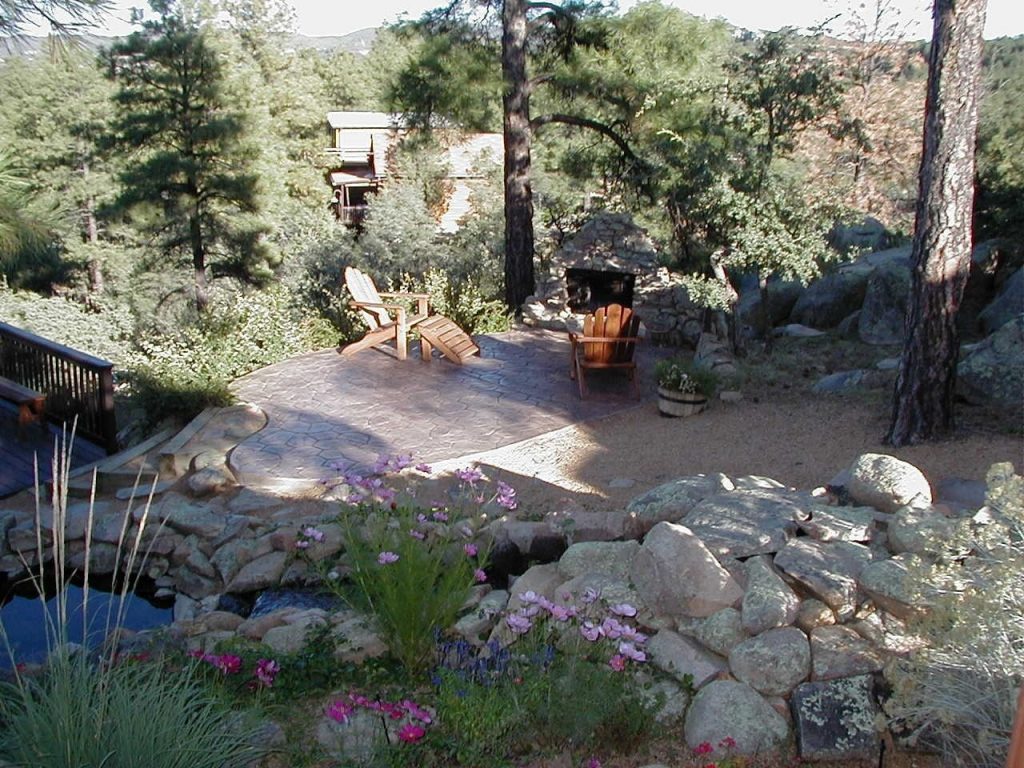Excitement About Hilton Head Landscapes
Table of ContentsThe Hilton Head Landscapes PDFsThe 4-Minute Rule for Hilton Head LandscapesThe Best Strategy To Use For Hilton Head LandscapesA Biased View of Hilton Head LandscapesThe Ultimate Guide To Hilton Head Landscapes7 Simple Techniques For Hilton Head LandscapesThe 2-Minute Rule for Hilton Head Landscapes
Line creates all kinds and patterns and can be made use of in a range of methods the landscape. Line in the landscape is produced by the edge in between 2 materials, the outline or shape of a form, or a lengthy direct feature. Lines are an effective device for the designer because they can be made use of to develop a limitless range of forms and forms, and they control motion of the eye and the body.

Lines in the landscape. The properties of lines figure out just how people react to the landscape, both psychologically and physically.
The Definitive Guide for Hilton Head Landscapes
Straight lines are frequently discovered in hardscape sides and product. Bent lines create a casual, all-natural, kicked back personality that is associated much more with nature and unbalanced equilibrium. Curved lines move the eye at a slower speed and add mystery to the area by producing covert views. Upright lines move the eye up, making an area feel larger.
Upright lines in the landscape consist of high, slim plant product, such as trees, or tall structures, such as an arbor or a bird residence on a post. Straight lines move the eye along the ground plane and can make a space feel bigger. Reduced lines are a lot more restrained and develop a feeling of rest or repose.
Some Of Hilton Head Landscapes
Reduced lines are created by low yard walls, sidewalks, and short bushes. Lines are made use of to draw types on a plan. In plan sight, they define plant beds and hardscape locations. Lines are also developed by the vertical kinds of built attributes and plant material. There are three key line types that create type in the landscape: bedlines, hardscape lines, and plant lines.
Bedlines connect plant product to your house and hardscape since the eye adheres to the line, moving the look via the landscape. Hardscape lines are produced by the side of the hardscape, which delineates the constructed structure. Line can likewise be produced by lengthy and slim products, such as a fencing or wall surface.
Unknown Facts About Hilton Head Landscapes
Kind is located in both hardscape and plants, and it is usually the dominant aesthetic component that spatially arranges the landscape and usually determines the design of the yard. The type of structures, plant beds, and garden ornaments also determines the overall form theme of the yard. Formal, geometric kinds consist of circles, squares, and polygons.
Plants create type in the yard through their outlines or silhouettes, however form can additionally be specified by a space or unfavorable space between plants - Landscaping bluffton sc (https://hearthis.at/steven-gonzales/set/hilton-head-landscapes/). Circles can be cycles, or they can be separated into half circles or circle sectors and combined with lines to create arcs and tangents
How Hilton Head Landscapes can Save You Time, Stress, and Money.
Circles can additionally be extended into ovals and ellipses for even more variety and passion. Circles are a solid style kind because the eye is constantly attracted to the center, which can be made use of to emphasize a prime focus or attach other kinds. Figure 2. Round kinds in hardscape and lawn panels.
The square kind can also be fractional and pre-owned consistently to develop a grid pattern. Unlike circles, squares are more powerful on the brink, which can be lined up or overlapped to produce unique patterns and even more intricate types. Polygons are many-sided forms with straight edges. Triangles, for instance, are three-sided polygons.
Twisting lines frequently simulate the all-natural program of rivers or streams and can be referred to as smooth lines with deeply bent wavinesses. Twisting lines (Number 3) function well for paths, plant bedlines, and completely dry stream beds. Twisting lines can include passion and enigma to a yard by leading viewers around edges to uncover brand-new sights and rooms.
Unknown Facts About Hilton Head Landscapes

Figure 5. Fragmented edges: tipping rocks in pathway. Form is the most enduring quality of a plant (hilton head landscapers). https://myanimelist.net/profile/h1tnhdlndscps. Typical plant forms are well established and standard, as type is the most regular and well-known feature of plants. Type can also be developed with the massing of plants, where the overall mass creates a various type than a private plant.
An extremely different kind has to be made use of with careone or 2 work well as a centerpiece, yet too numerous wreak havoc. All-natural plant kinds, as opposed to over-trimmed types, should establish the mass of the make-up. The relevance of general type is basically reliant on the viewing perspectivethe form of a read more tree can appear quite various to a person standing under the canopy versus checking out the tree from a distance in an open field.
Not known Factual Statements About Hilton Head Landscapes
Plant types also create and define the void or open rooms in between the plants, producing either convex or scooped forms in the voids. High-arching tree branches normally develop a concave open area under the branches, and a rounded canopy with low branches fills up the area to develop a convex form outdoors area under the tree.
